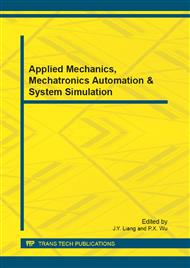p.1761
p.1768
p.1774
p.1779
p.1783
p.1789
p.1794
p.1800
p.1804
Reliability Models of GSM-R Redundant Network on High-Speed Railway
Abstract:
As a dedicated digital mobile communication system designed for railway application, GSM-R must provide reliable bidirectional channel for transmitting security data between trackside equipments and on-train computer on high-speed railways. To ensure the safety of running trains, redundant network architecture is commonly used to guarantee the reliability of GSM-R. Because of the rigid demands of railway security, it is important to build reliability mathematical models, predict the network reliability and select a suitable one. Two common GSM-R wireless architectures, co-sited double layers network and intercross single layer network, are modeled and contrasted in this paper. By calculating the reliabilities of each reliable model, it is clear that more redundant the architecture is, more reliable the system will be, the whole system will bear a less failure time per year as the benefit. Meanwhile, as the redundancy of GSM-R system raises, its equipment and maintenance will cost much, but the reliability raise gently. From the standpoint of transmission system interruption and network equipment failure, the reliability of co-sited double layer network architecture is higher than the intercross single layer one, while the viability and cost of the intercross redundant network is better than co-sited one in natural disasters such as flood and lightning. Taking fully into account reliability, viability and cost, we suggest that intercross redundant network should be chosen on high-speed railway.
Info:
Periodical:
Pages:
1783-1788
Citation:
Online since:
September 2012
Authors:
Price:
Сopyright:
© 2012 Trans Tech Publications Ltd. All Rights Reserved
Share:
Citation:


